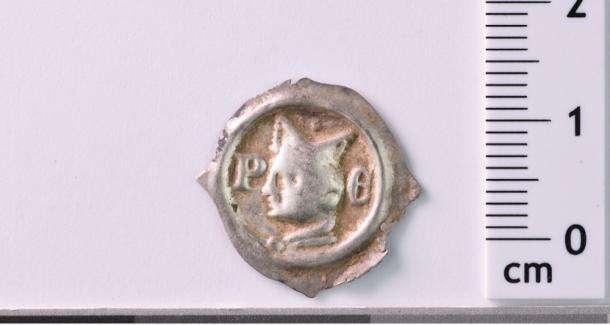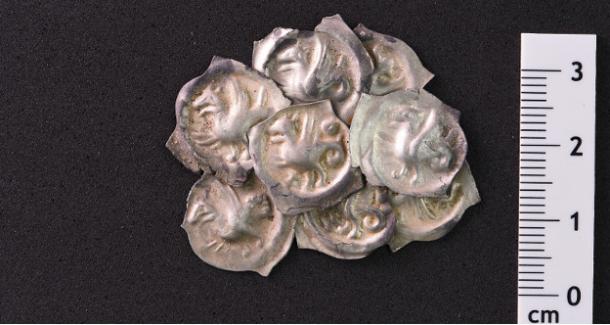One of the largest medieval coin hoards in recent decades has been unearthed in Glottertal, a picturesque village in the Breisgau-Hochschwarzwald district of Germany. This extraordinary find, consisting of approximately 1,600 coins, offers a rare window into the economic practices of 14th-century Europe and sheds light on the region’s minting activity, silver trade, and the broader monetary circulation in Breisgau.
A Routine Task Turns into a Major Archaeological Find
The treasure was discovered by Claus Völker, a local citizen who was assisting with the laying of a pipeline near the village swimming pool in early May 2024, records a Stuttgart Regional Council press release.
Völker’s sharp eye caught sight of what he initially described as “small metal plates” within the excavation. Realizing the potential significance of these objects, he promptly reported the find to the State Office for Monument Preservation (LAD) in the Stuttgart Regional Council.
LAD archaeologists, alongside Völker, visited the site the same day to recover the coins, and discovered a whopping 1000 coins. On subsequent visits, a team of certified detectorists braved difficult conditions, including heavy rains that turned the excavation site into knee-deep mud, and uncovered an additional 600 coins, bringing the total to around 1,600.

Most of the coins were minted around 1320. (State Office for Monument Preservation in the Stuttgart Regional Council)
The Coins: A Snapshot of 14th-Century Mints
After the coins underwent preliminary cleaning, an initial assessment revealed their origins. According to Andreas Haasis-Berner, an archaeologist at the LAD, the majority of the coins were minted around 1320 and came from several prominent mints, including Breisach, Zofingen, and Freiburg. Additionally, there were coins from Basel, St. Gallen, Zurich, Laufenburg, and Colmar.
This diverse array of coins is a testament to the extensive trade networks and the movement of currency within the region during the early 14th century. Each coin carries with it a story of the economic and political landscapes of medieval Europe, reflecting the wealth and influence of the cities that issued them.

The coins came from a wide variety of sources in the region. (State Office for Monument Preservation in the Stuttgart Regional Council)
Economic Significance: Understanding Medieval Trade and Currency
The discovery of this coin hoard is significant for several reasons, notes the LAD report:
First, it provides valuable insights into the circulation of currency in the Breisgau region during the medieval period. By analyzing the coins, archaeologists hope to better understand the dynamics of trade and the relative economic strength of different cities and regions.
Furthermore, the hoard offers clues about the silver trade in the area, particularly in relation to the mining activities in Glottertal. Silver was a critical resource for minting coins, and its availability would have directly influenced the production of currency. The hoard’s composition could therefore reveal important information about the local mining industry and its role in the broader European economy.
Haasis-Berner highlighted the historical value of the coins, noting that at the time of their circulation, they would have held considerable purchasing power:
“You could have bought about 150 sheep with the coins”
The Importance of Preservation and Continued Research
The discovery in Glottertal is not only a boon for archaeologists but also a reminder of the importance of careful preservation and study of historical artifacts. Each coin recovered from the site adds to the collective understanding of the medieval period, providing tangible links to the past.
As research on the hoard continues, experts will likely uncover further details about the specific conditions that led to the accumulation and eventual burial of the coins. Whether they were hidden in response to a specific threat, or simply as a means of safeguarding wealth, remains to be seen.
The LAD’s involvement in the discovery and recovery process exemplifies the critical role that state offices play in protecting and studying cultural heritage. The dedication of the archaeologists and detectorists, who braved challenging conditions to recover these artifacts, highlights the collaborative effort required to bring such treasures to light.